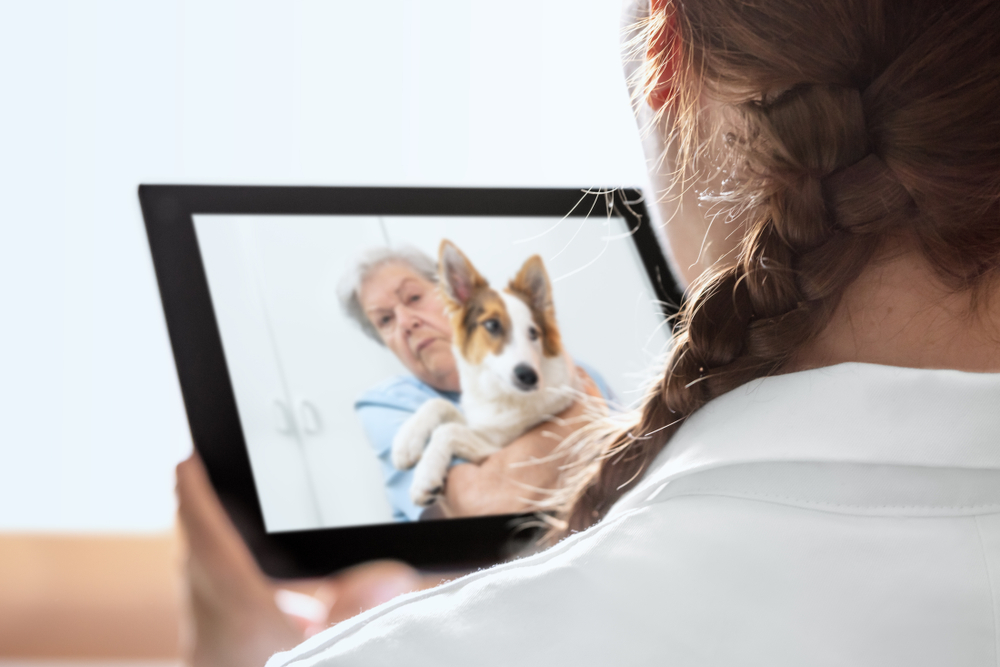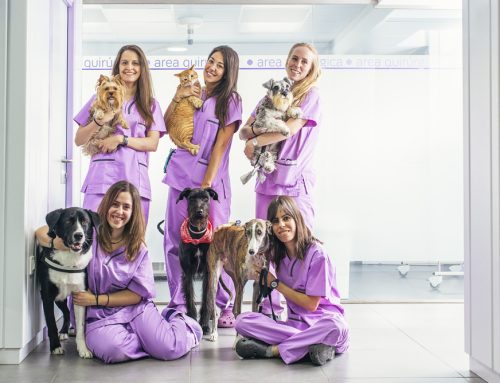Technological advances and COVID-19’s restrictions rapidly established telehealth as an extraordinary opportunity for enhanced veterinary care. However, many professionals are still learning how to use telehealth’s benefits safely and effectively. Although virtual veterinary services can enhance your practice, you and many of your colleagues likely have concerns about the veterinary-client-patient relationship (VCPR). Read virtual relief service DVM6’s guide to learn the answers to the most common questions about veterinary telehealth.
Question: What defines veterinary telehealth?
Answer: The telehealth field includes many similar—but specific—terms, which are defined clearly. Becoming familiar with these various definitions can help you understand when and why you must have a valid VCPR. According to the American Veterinary Medical Association (AVMA), veterinary telehealth is an “[o]verarching term that encompasses all uses of technology geared to remotely deliver health information or education.” Although each category varies based on the service’s need for a valid VCPR, telehealth includes the following specialties:
- Telemedicine — The AVMA’s telemedicine policy defines telemedicine as “[t]he use of medical information exchanged from one site to another via electronic communications regarding a patient’s clinical health status.” A valid VCPR must be in place for a pet to receive telemedicine care. Telemedicine providers should have remote access to the pet’s electronic medical records (EMRs). As a virtual relief service, DVM6 uses a practice integration management system (PIMS) to review each patient’s EMR before their appointment and enter exam notes afterward. Our DVM6 veterinary professionals conduct a virtual examination through photos and recorded or real-time video.
- Teleadvice — The AVMA explicitly states that teleadvice “is not intended to diagnose, prognose, treat, correct, change, alleviate, or prevent animal disease, illness, pain, deformity, defect, injury, or other physical or mental conditions.” This category includes general information or advice that is not specific to a pet’s condition, illness, or injury. Anyone (i.e., veterinary professional or not) can provide teleadvice.
- Teletriage — The AVMA deems teletriage services (e.g., emergency or toxicology hotlines) acceptable with no valid VCPR. During a teletriage assessment, the pet owner describes the patient’s condition, signs, and history, and the veterinarian refers for urgent or nonurgent care. In these cases, the veterinarian is not rendering a diagnosis or prognosis—only recommending a specific in-person veterinary treatment type.
Q: What defines a valid VCPR for veterinary telehealth?
A: The VCPR is veterinary care’s cornerstone, which must be in place before practicing in-person or virtual medicine. The AVMA Model Veterinary Practice Act presents all VCPR requirements, summarized and paraphrased as follows:
- Responsibility — The veterinarian assumes responsibility for patient care decisions, and the pet owner agrees to follow the veterinary recommendations.
- Knowledge — The veterinarian must have a working knowledge of the pet’s health through past or present experience and the owner’s description.
- Follow-up — The veterinarian should be available for or have arranged additional care for the pet as needed (e.g., follow-up appointments or specialist referral).
- Supervision — The veterinarian oversees patient care, compliance, and outcome.
- Record keeping — Veterinary patient records should be well-maintained and include up-to-date notes on patient condition, diagnoses, recommendations, and treatments
Q: How does veterinary telehealth support the VCPR?
A: According to the U.S. Food and Drug Administration (FDA) and the AVMA, a valid VCPR cannot be established or maintained exclusively through electronic means. Because of this requirement, DVM6 operates as an adjunct service for partnering practices—not as a separate or stand-alone care option. By operating under the umbrella of your established VCPR, DVM6’s telehealth services provide your clients with a continuous high-quality veterinary experience. Because we closely review each pet’s EMR before their appointment, DVM6 providers are familiar with your patient’s history and act as an extension of your practice—conducting an informed assessment that quickly establishes trust and rapport. Telehealth provides unique benefits that support and strengthen your VCPR, including:
- Increased access to care — By offering your clients telemedicine appointments for their pet’s care that requires no hands-on services, you improve your practice’s scheduling for all appointment types, and can prioritize time-sensitive, urgent, and advanced care needs (e.g., procedures, surgery).
- Chronic case management and monitoring — Clients with chronically ill pets require long-term support and education, which can be time-consuming in the clinical setting. Telehealth appointments are unhurried, and our DVM6 providers ensure clients understand all the necessary information and have the practical know-how to care for their pet at home.
- Client education — Because your client and their pet are in the familiarity, safety, and comfort of their own home, telehealth creates an ideal space for client education and training. Informed and supported clients are more likely to follow veterinary recommendations, seek prompt care, and remain loyal to your practice.
Q: What are veterinary telehealth’s limitations in regard to the VCPR?
A: For a veterinary practice that has no valid VCPR, telehealth services are limited to general pet care information and nonspecific advice, with emergency teletriage being the only exception. Because teleadvice cannot cover medical conditions, this virtual service is ideal for the discussion of healthy pets’ wellness and preventive care.
Q: Is veterinary telemedicine legal in my state?

A: The AVMA recommends that veterinary telemedicine providers be licensed by the state in which they are practicing and by the state in which the patient is located. If you are considering adding virtual care to your practice, check your state, local, and federal statutes and regulations to ensure your telehealth offerings are legal, and that you, your patients, and your practice are protected. DVM6 is currently licensed to provide telehealth veterinary services at partnering practices in Colorado, Wisconsin, and Florida.
As a virtual veterinary relief service, DVM6 creates personalized care opportunities that preserve and strengthen your practice’s priceless veterinary-client-patient bond. By working within your established client relationships, our DVM6 professionals provide the support your practice needs—and deserves—so you can get back to providing the hands-on veterinary care that spurred you to join the profession in the first place.
Ready to find more hours in the day without compromising high-quality veterinary care? We’ve got your six! Visit the DVM6 solutions page, or contact us for more information.








Leave A Comment